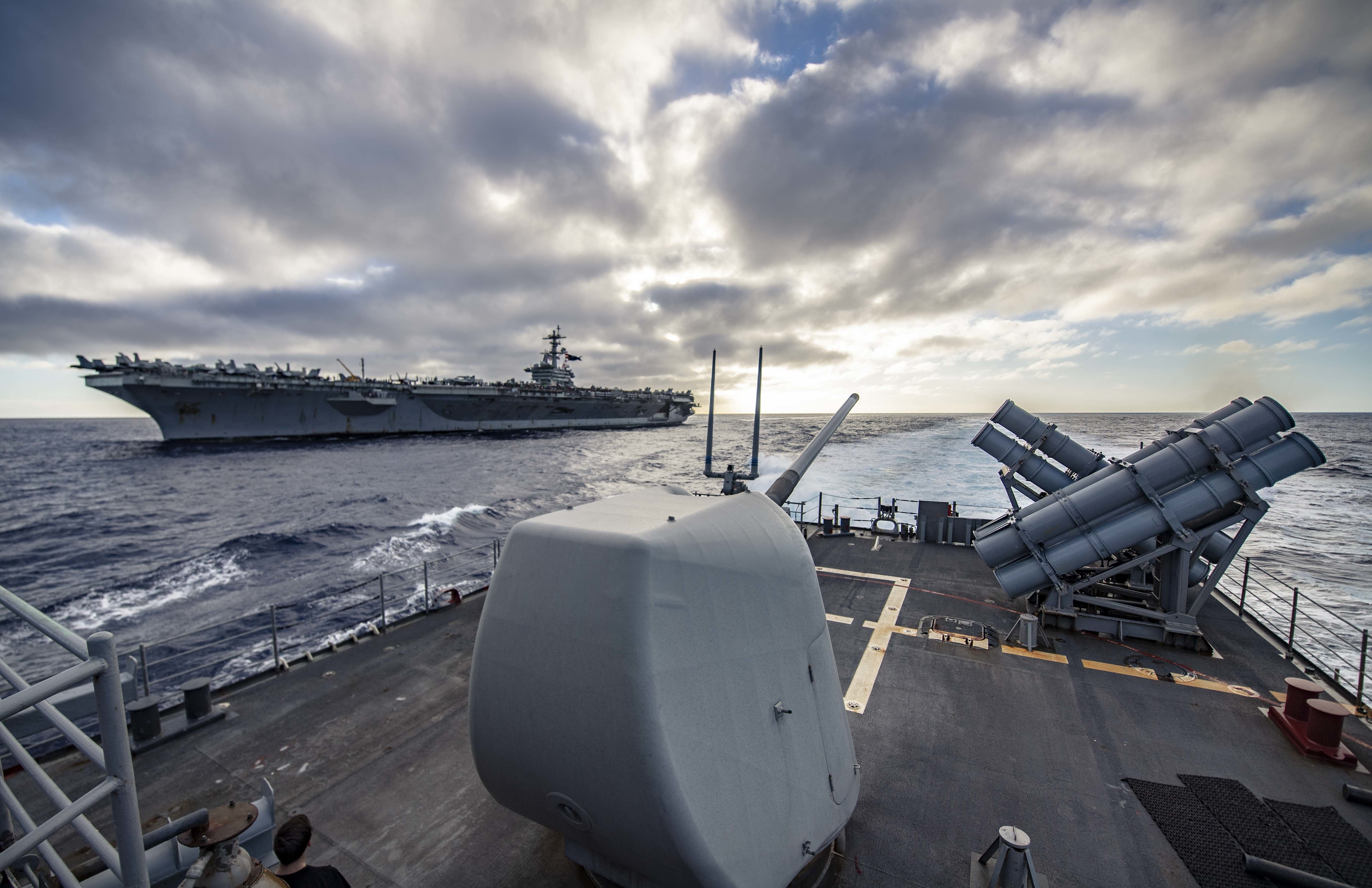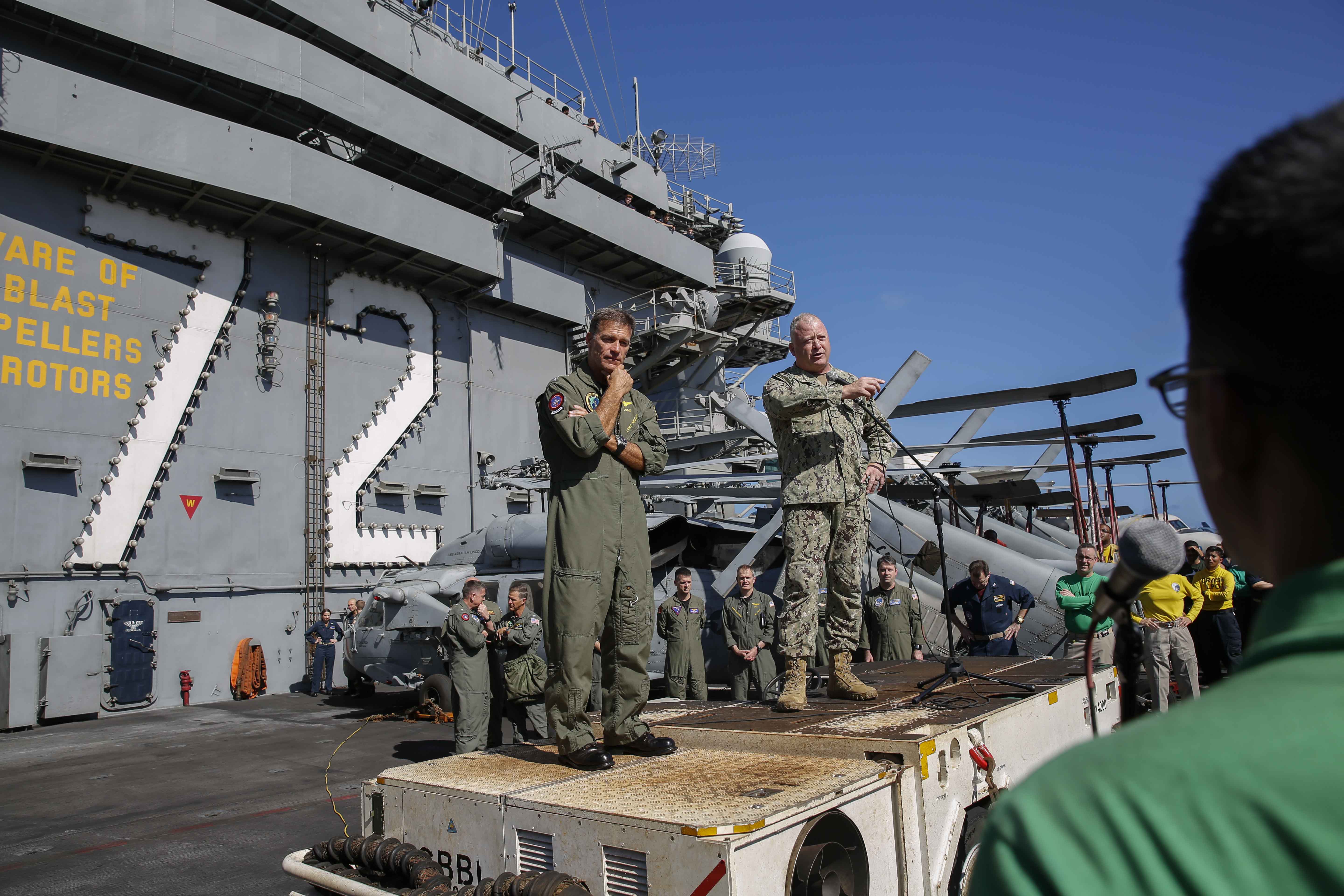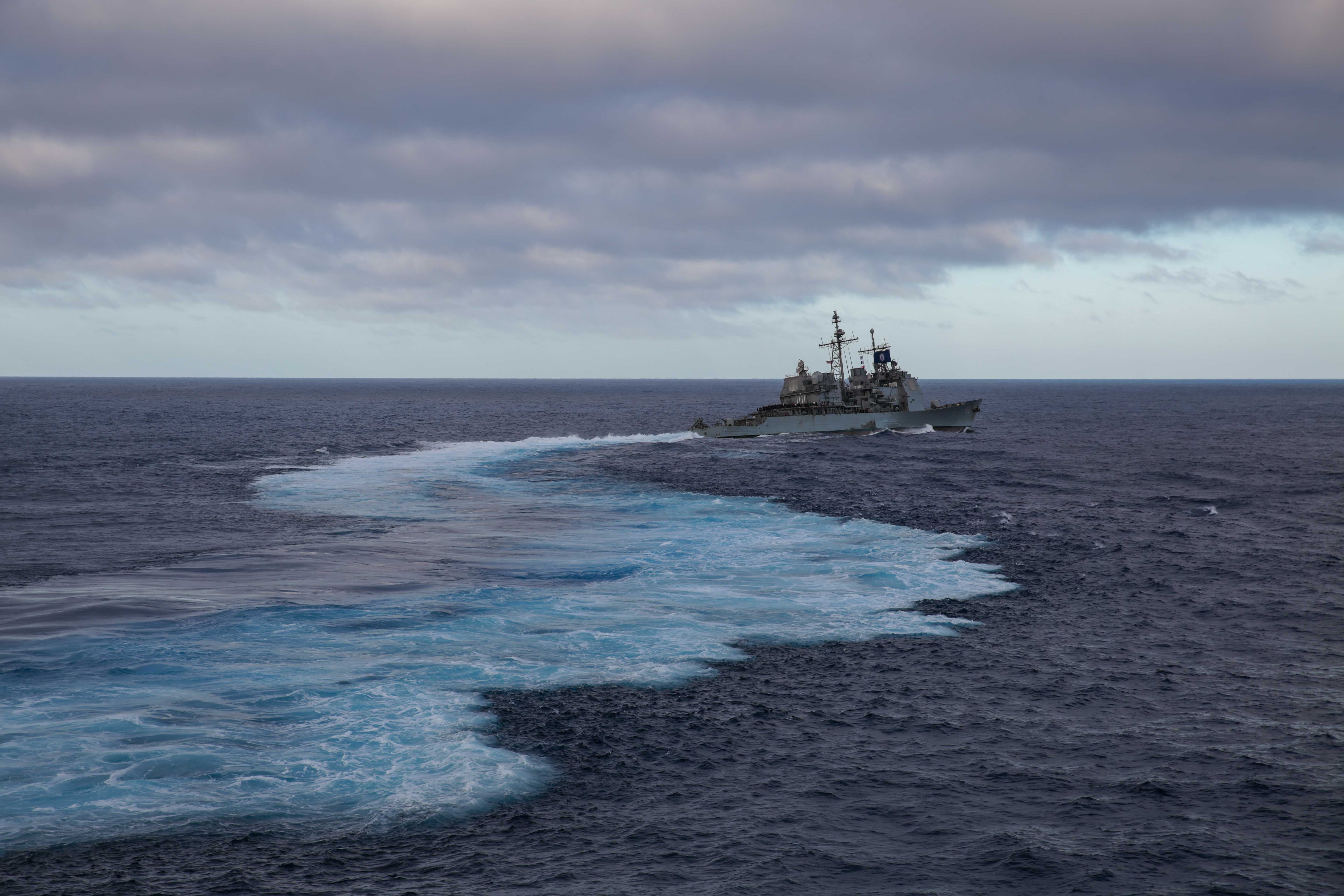
This post has been updated to include comments from a Navy news release.
USS Abraham Lincoln (CVN-72) and its air wing pulled into Pearl Harbor, Hawaii, today, in the last leg of a lengthy deployment that could break records.
The ship departed Norfolk, Va., for a deployment and homeport change on April 1. Including today, the ship has been deployed for 283 days – just one week shy of the post-Vietnam War carrier deployment record of 290 days, according to USNI News records. The deployment has included operations in U.S. 6th Fleet, U.S. 5th Fleet, U.S. 7th Fleet, and now U.S. 3rd Fleet.
“I am proud of all of the hard work and dedication shown by the entire crew throughout the deployment,” Capt. Walter Slaughter, Abraham Lincoln commanding officer, said in a Navy news release.
“Hawaii is a strategic, historic location that presents a well-deserved opportunity for rest and relaxation, and for the crew to honor the sacrifices of those who have gone before us during the attack on Pearl Harbor.”
Lincoln deployed with a strike group of surface ships that have all since returned back to Norfolk, while the carrier remained in U.S. 5th Fleet outside the Persian Gulf as tensions with Iran have remained high since May. Lincoln rushed to the North Arabian Sea in May when tensions first ratcheted up, and it remained there outside the Persian Gulf until a Nov. 19 transit through the Strait of Hormuz and into the Gulf.
USS Harry S. Truman (CVN-75) was sidelined in late August, just before its planned deployment to relieve Lincoln, due to electrical system malfunctions. Lincoln remained on station in the Middle East until Truman arrived in U.S. Central Command waters in mid-December.

Lincoln’s destroyer escorts – USS Bainbridge (DDG-96), USS Mason (DDG-87) and USS Nitze (DDG-94) – departed the Middle East in the fall and returned to Norfolk on Nov. 5. Cruiser USS Leyte Gulf (CG-55) remained in the Middle East longer and just returned to Norfolk over the weekend, on Jan. 4.
Once its own escorts left the Middle East, Lincoln was supported by the Truman Carrier Strike Group’s destroyers while in 5th Fleet and then by Japan-based USS Chancellorsville (CG-62) during the carrier’s transit through the Pacific to its new homeport of San Diego, Calif. Chancellorsville remained with Lincoln through at least Jan. 4, when the ship was already in U.S. 3rd Fleet waters.

Ship spotters put Lincoln in Pearl Harbor today, and a Navy news release later confirmed the location. U.S. 3rd Fleet could not comment on future ship operations, including how long the carrier might stay in Hawaii and when it would head home to San Diego – and therefore if Lincoln was likely to crack the record or not.
However, the news release noted that, “before the ship departs Hawaii, Abraham Lincoln family and friends will have the rare opportunity to embark on a Tiger Cruise to experience life at sea with their Sailors. Tiger Cruises are a time-honored tradition during which civilians are given the chance to spend time underway learning about their Sailors’ jobs, ship, and shipmates.”
The 290-day post-Vietnam era deployment record belongs to Lincoln as well, from its deployment to the Middle East from July 2002 to May 2003 during the kickoff of operations in Iraq.
According to the Navy, the 290-day deployment for Lincoln was notable in several ways: it was the first deployment of nine months or longer since 1973, it saw the first operational deployment of the F/A-18E Super Hornet, and it led the Navy’s part in the opening days during the “shock and awe” campaign of Operation Iraqi Freedom – where more than 1.3 million pounds of ordnance was dropped in 17 days and a record 21 million gallons of JP-5 jet fuel was used to launch and recover aircraft 12,673 times.
Beyond that, USS America (CVA-66) was deployed for 292 days for the Vietnam War from June 1972 to March 1973. According to USNI News records, all carrier deployments that were lengthier than 290 days took place during the Vietnam War or earlier.





